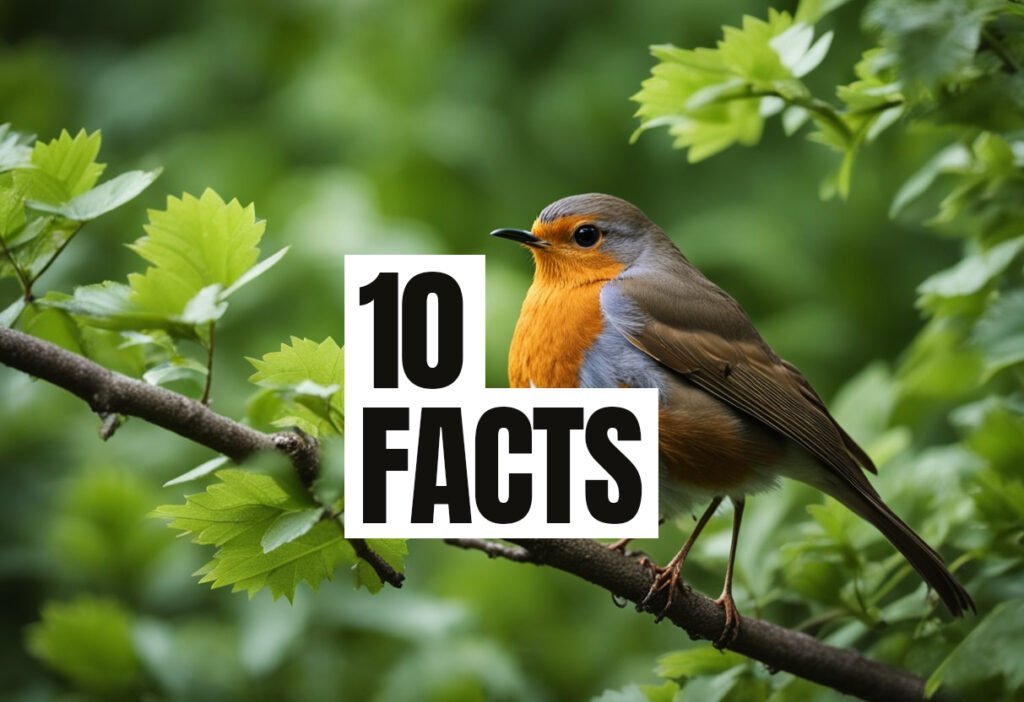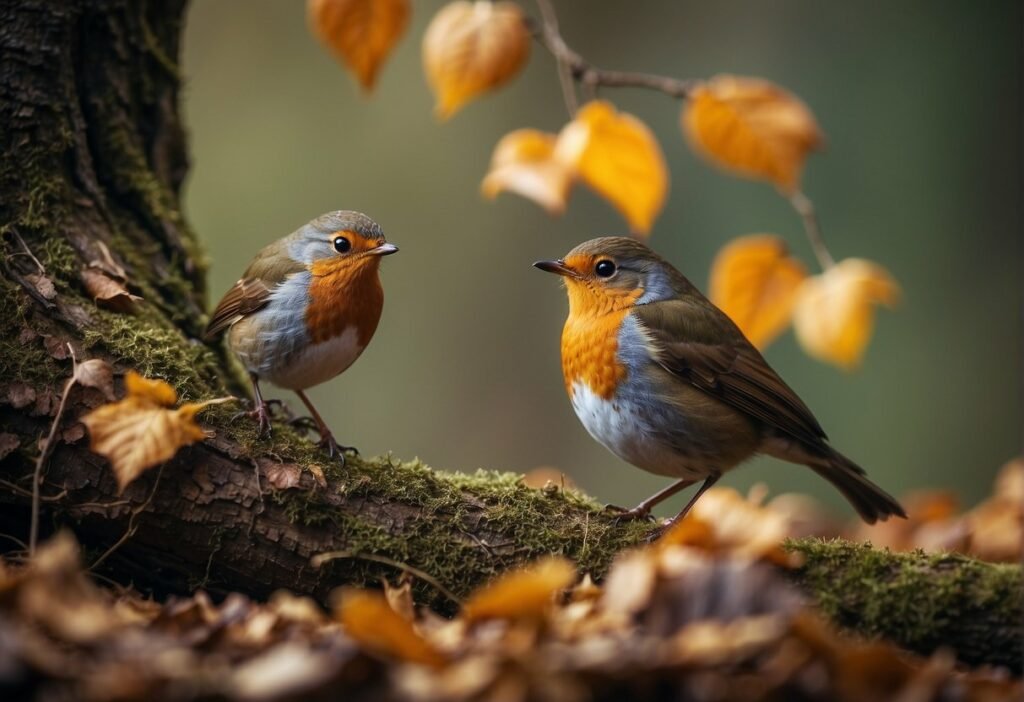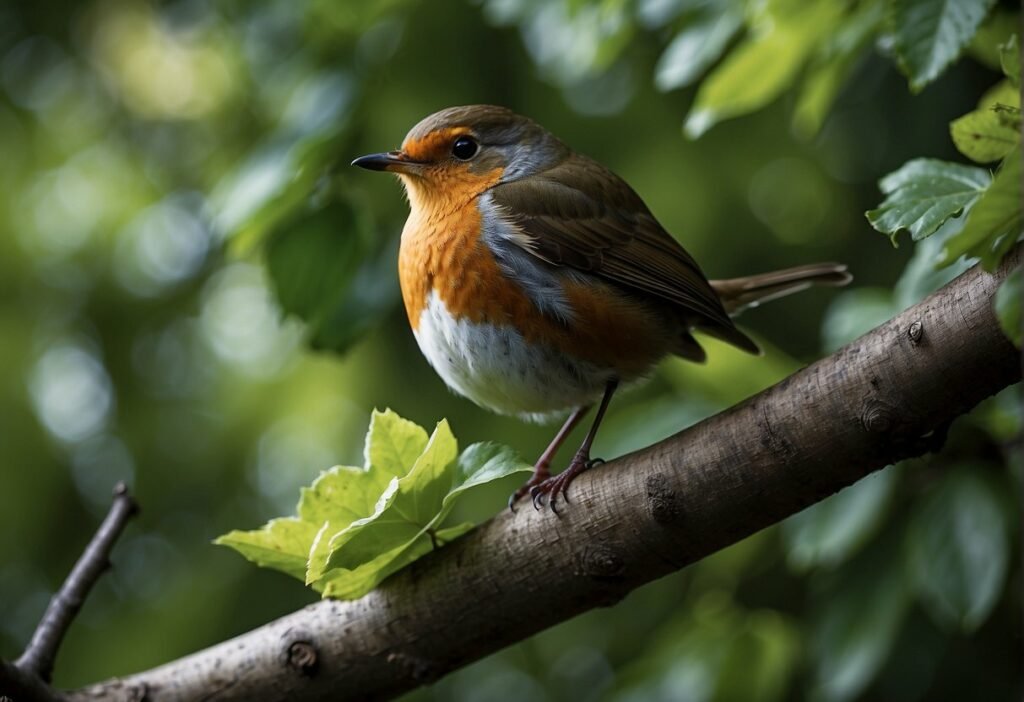Robins are a common sight in many backyards and parks throughout North America. These medium-sized birds are known for their bright orange-red breast and cheerful song. But are robins social birds? The answer is not as straightforward as one might think.

Robins are generally considered to be solitary birds, as they are often seen foraging alone. However, during the breeding season, they become more social, forming pairs and defending territories. In fact, male robins will often sing to attract a mate and defend their territory against other males. Once a pair is formed, they will work together to build a nest and raise their young. Despite this social behavior during breeding season, robins are not known to form flocks outside of the breeding season.
Robins: Social Behavior and Group Dynamics
Robins are social birds that often form flocks outside of the breeding season. These flocks can consist of both males and females, and they engage in various social interactions such as foraging and vocal communication.
Flocks and Social Interactions
Outside of the breeding season, robins can be found in flocks of varying sizes. These flocks are typically composed of both males and females, although males may be more dominant in some cases. Within these flocks, robins engage in various social interactions such as foraging together and communicating through calls and songs.
Breeding Habits and Nesting
During the breeding season, robins form pairs and build nests to raise their young. The male and female work together to build the nest, which is typically constructed of grasses, twigs, and other plant materials. Once the nest is built, the female lays her eggs and both parents take turns incubating them. After the eggs hatch, the parents continue to work together to care for their young.
Communication: Calls and Songs
Robins communicate with each other through a variety of calls and songs. Males in particular are known for their distinctive territorial songs, which they use to attract mates and defend their breeding territory. Females also have a variety of calls that they use to communicate with their mates and offspring.
Overall, robins are social birds that exhibit a range of interesting behaviors and group dynamics. From their flocks outside of the breeding season to their pair-bonding and nest-building during the breeding season, robins are fascinating creatures that are worth observing and learning more about.
Habitat, Diet, and Conservation
Dietary Preferences and Foraging
Robins are omnivorous birds with a diverse diet that varies depending on the season and habitat. Their diet mainly consists of earthworms, insects, and invertebrates, but they also eat fruits, berries, and eggs. During the breeding season, robins rely heavily on earthworms and insects to feed their young. In the fall and winter, they switch to a diet of fruits and berries.
Robins forage on the ground, using their keen sense of sight to locate food. They also search for food on trees and shrubs, where they can find insects, berries, and fruits.
Habitat Range and Adaptability
Robins are found throughout North America, from Alaska to Mexico, and from Canada to Cuba. They are adaptable birds that can thrive in a variety of habitats, including forests, parks, gardens, and urban areas. They prefer open habitats with scattered trees and shrubs, but can also be found in dense forests.
Robins are migratory birds that travel long distances to reach their breeding and wintering grounds. They are able to adapt to changes in their environment, and can even thrive in suburban and urban areas.
Conservation Status and Threats
The American Robin is a species of least concern on the IUCN Red List, with a stable population trend. However, some subspecies of robins are threatened by habitat loss, climate change, and predation by cats and snakes.
Robins play an important role in their ecosystem, as they help control populations of insects and invertebrates. They are also important seed dispersers, as they eat fruits and berries and then spread the seeds through their droppings.
In order to protect robins and their habitats, it is important to minimize habitat destruction and fragmentation, reduce pesticide use, and promote conservation efforts in parks and other natural areas.
Frequently Asked Questions
What are the different species of robins found worldwide?
There are several species of robins found worldwide. The American robin is one of the most common species found in North America, while the European robin is found in Europe, Asia, and parts of Africa. Other species of robins include the African robin, the Indian robin, and the Japanese robin.
What is the significance of a robin’s presence or behavior?
Robins are known for their presence and behavior, which can vary depending on the species. They are often seen as a symbol of spring and new beginnings, as they are one of the first birds to return to their breeding grounds after winter. Robins are also known for their territorial behavior, which can be aggressive towards other birds during breeding season.
How do robins typically interact with various bird species?
Robins can interact with a variety of bird species, both positively and negatively. They may form flocks with other robins during the winter months, and may also interact with other bird species during migration. However, they can also be aggressive towards other birds during breeding season, particularly if they feel their territory is being threatened.
What behaviors exhibit robins’ friendliness towards humans?
Robins are known for their relatively friendly behavior towards humans. They may approach people in search of food, and may even build their nests in close proximity to human dwellings. However, it is important to remember that robins are still wild animals and should be treated with respect and caution.
What are some interesting and notable facts about robins?
Robins are known for their distinctive red breast, which is actually more orange than red. They are also one of the few bird species that can successfully raise two broods in a single breeding season. Additionally, robins have been known to migrate as far as 2,500 miles in a single season.
What is the natural habitat of the American robin?
The American robin is found throughout North America, from Alaska to Mexico. They typically prefer open woodlands, forest edges, and suburban areas with plenty of trees and shrubs for nesting and foraging. However, they can also be found in more open habitats such as fields and meadows.




